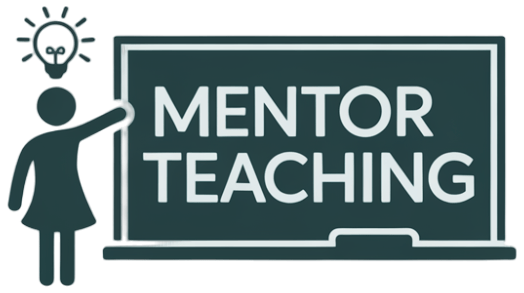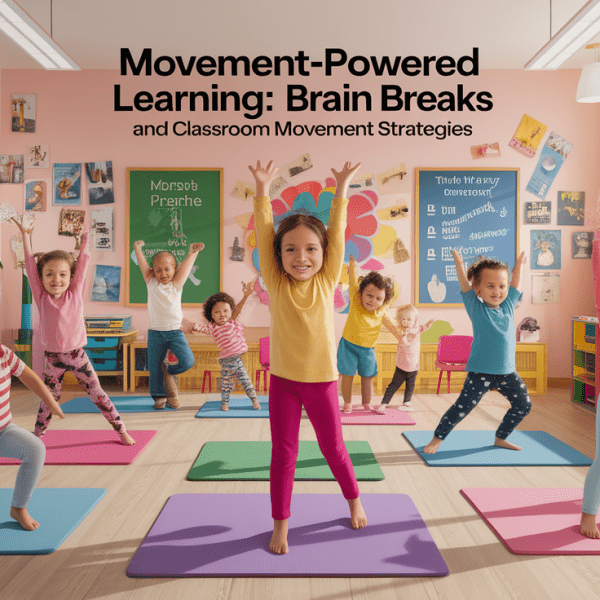Ever have a student’s hand shoot up mid-lesson to ask, “But when will we ever use this in real life?” It’s a moment every teacher knows. We see the connections, but our students are often stuck navigating a maze of separate subjects. What if we could give them the map? By using effective cross curricular teaching methods, we can transform isolated lessons into a vibrant, interconnected web of knowledge that sticks with students long after the bell rings.
Spark the Connections
At its heart, cross-curricular teaching is about breaking down the artificial walls between subjects. It’s the art of seeing your math lesson in a piece of music, your history lesson in a science experiment, and your literature lesson in a work of art. Think of it not as adding more to your plate, but as combining ingredients to create a much more delicious and satisfying meal. Instead of teaching history, science, and art in separate, 45-minute blocks, you might explore the Renaissance by studying Leonardo da Vinci—analyzing his artistic techniques (Art), investigating his inventions and anatomical studies (Science & Engineering), and exploring the historical context of his life and patrons (Social Studies).

This approach helps students see learning not as a checklist of subjects to get through, but as one big, exciting puzzle where every piece fits together to reveal a bigger picture.
The Benefits of Integrated Learning
When we weave our subjects together, the benefits ripple out to everyone in the classroom. Students don’t just learn *what*; they begin to understand *why*.

- Deeper Understanding: When a concept is revisited across different disciplines, it reinforces learning and moves knowledge from short-term to long-term memory.
- Increased Engagement: Integrated lessons often tap into real-world problems and student interests, making learning feel relevant and exciting. Suddenly, calculating percentages isn’t just a math problem—it’s part of designing a budget for a class project.
- Boosted Critical Thinking: Cross-curricular work encourages students to make connections, analyze information from multiple perspectives, and solve complex problems—skills essential for the 21st century.
- A More Collaborative Classroom: These projects often lend themselves to group work, fostering collaboration, communication, and teamwork among students and even staff.
By connecting curriculum, we help students connect with their own learning on a much more profound level.
Core Strategies for Cross-Curricular Teaching
Ready to start weaving? You don’t need to reinvent your entire curriculum overnight. These powerful and flexible strategies can help you integrate subjects in a way that works for you and your students.
Thematic Units
This is a classic for a reason. Choose a broad, compelling theme—like “Cycles,” “Conflict,” “Exploration,” or “Identity”—and plan units around it. For a theme of “Cycles,” you could explore:

- Science: The water cycle, life cycles of plants and animals, planetary orbits.
- Social Studies: The rise and fall of civilizations, cycles of poverty and wealth.
- Language Arts: The hero’s journey narrative cycle, cyclical poetic structures.
- Math: Recurring patterns and sequences.
Project-Based Learning (PBL)
Project-Based Learning is a fantastic vehicle for cross-curricular work. Pose a complex question or problem and let students solve it over an extended period. For example, “How can we improve our school’s recycling program?” This single project requires:
- Math: To collect and analyze data on waste, calculate costs and benefits.
- Science: To understand the process of decomposition and recycling materials.
- Language Arts: To write proposals, create presentations, and design informational posters.
- Social Studies/Civics: To understand community impact and present ideas to school leadership.
Lesson Linking
The simplest way to start is by linking just two lessons. This “buddy system” approach is manageable and highly effective. Are you teaching fractions in math? Partner with the music teacher to explore time signatures and note values. Studying ancient Egypt in history? Work with the art teacher to create cartouches or with the science teacher to build simple machines based on Egyptian technology.
Implementing in the Classroom
Bringing this to life can feel daunting, but the key is to start small and build momentum. You don’t need a perfectly integrated curriculum on day one.

- Find a Partner: Grab a coffee with a colleague from another department. Find one area where your curricula overlap this semester and plan a single linked lesson or a small project. The energy from collaboration is contagious!
- Map Your Year: Take out your curriculum map and a highlighter. Where do natural connections already exist? A novel in your ELA class set during a historical period? A scientific discovery that changed society? Highlight them as potential starting points.
- Let Students Lead: Pose a simple question: “Where else have we seen an idea like this?” Let their curiosity help you forge connections. When students see the links for themselves, the learning becomes their own.
Overcoming Common Challenges
Let’s be real—implementing something new comes with hurdles. But they are more like speed bumps than roadblocks.
- “I don’t have enough time!” This is the number one concern. Start with lesson linking, which requires minimal extra planning. Co-planning with another teacher also cuts the workload in half. Remember, this can ultimately *save* time by reinforcing concepts so you don’t have to re-teach them.
- “What about standardized tests?” Cross-curricular teaching isn’t a detour from test prep; it’s a superhighway to deeper comprehension. By showing students the same concept in different contexts, you are building flexible, resilient knowledge that they can apply to any test question.
- “Our departments are too siloed.” Be the bridge. Start a small-scale collaboration and showcase your students’ amazing, integrated work. Success is the best advocate for change. Once others see the engagement and deep learning, they’ll want to join in.
Tying It All Together
Creating a more connected curriculum is one of the most powerful moves we can make as educators. It transforms learning from a series of disconnected facts into a meaningful, cohesive story. By adopting these cross-curricular teaching methods, you empower your students to think critically, creatively, and holistically. You give them the tools not just to find the answers, but to understand how all the questions are related in the first place.




